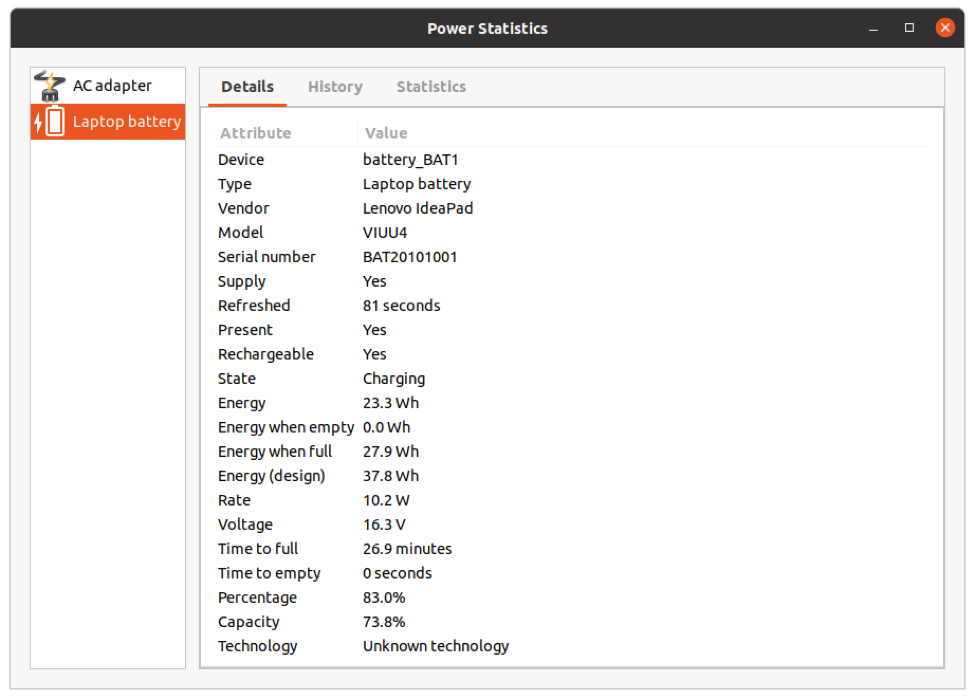
* CPU frequency scaling (provided by cpufreq-applet) * Power Statistics (provided by GNOME Power Manager)

#Linux battery status install#
GCONF_CONFIG_SOURCE=$(gconftool-2 -get-default-source) gconftool-2 -makefile-install-rule /usr/share/gconf/schemas/battery-status.schemasĬommand for installation in Ubuntu from Launchpad's PPA:Īdd-apt-repository ppa:iaz/battery-statusĪpt-get install battery-status Basic Usageįor place applet to panel, right click on it, and select "Add to Panel." > "Battery Applet"Īfter adding, by default applet shows icon only.įrom main menu user (by default) can get access to:
#Linux battery status code#
Non-Debian/Ubuntu source code tree (without debian/ directory):

Packages for Ubuntu can be found in this launchpad repository:ĭebian/Ubuntu-related source code tree (with debian/ directory for packaging): For better experience you should re-login after installation.

In "Device Information" dialog all battery information puts in one heap, but in "Battery Status" dialog battery information divided by two (three) easy-readable areas - one for battery capacity, another for battery charge (and another for battery information).īattery Status can be installed from package, or from sources. "Device Information" dialog (which has been totally deprecated in last versions) from GNOME Power Manager's icon has been replaced by "Battery Status" dialog in Battery Status. But when user is deep in thoughts about his current work/task/action/etc, his locus of attention (see for more details) may just couldn't see notification-like warning about critical low (which very important if user hasn't get access for power) - it should be message on top of all windows. GNOME Power Manager supports notifications (via notification-daemon/notify-osd), and this is very useful. Problems, which has been described above, can be solved by using battstat-applet (Battery Charge Monitor applet), but it has some historical architectural disadventages (such as relies on ACPI and HAL) and user interface problems (such as using non-consistent icons) itself, and by these reasons this applet has been declared as obsolete, has been deprecated and removed from set of standard gnome-applets package in such key GNOME Desktop GNU/Linux distributions as Fedora and Ubuntu (see also this discussion for more information).Īnother improvement - warning message about critical battery charge. Also, using GNOME Power Manager's icon, user can't direct place, where exactly battery information should be showing. Such behavior pretty annoying, so Battery Status' applet hasn't got such behavior and allow to user see percentage/lifetime/charge time of battery right in panel next to icon. GNOME Power Manager's notification icon has got main user interface shortcoming (if its purpose - to show battery information) - for see exactly battery percentage or battery lifetime, user should hover mouse to icon, wait couple seconds, and only then user could see required information (tool tip - the bad way for getting information in such cases). It has some additional features, so usual icon of gnome-power-manager can be removed from notification/indicator area.īattery Status doesn't rely on gnome-power-manager directly, but counting on presence in system for some useful integration with it. Battery Status is a panel applet for GNOME, that shows information about laptop battery state.


 0 kommentar(er)
0 kommentar(er)
